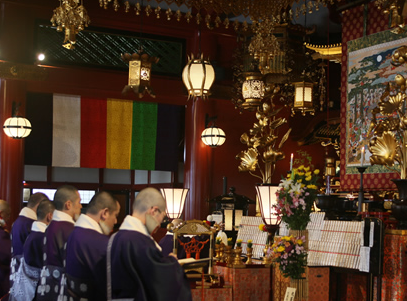Kito (祈祷) is one of the rituals performed at Buddhist temples and Shinto shrines. It is a ceremony officiated by monks and priests, in which believers pray to Buddha or the gods for their wishes to be fulfilled.
In modern Japanese society, people visit temples and shrines for Kito to make wishes for things such as protection from misfortune (Yakuyoke), family safety, business success, and more.
Praying to the gods can be traced back to animism in ancient times. However, the current style of Kito in Japan can be seen among the noble class during the Nara era (8th century). Since then, it has gradually spread—first to the samurai class, and eventually to ordinary people.
Information on how to apply for Kito at Asakusa Sensoji (浅草寺) is included in this post.
When making Kito?
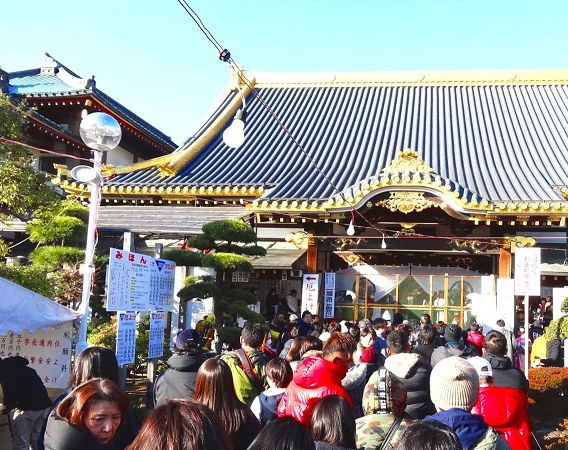
Many Japanese people, when they are in the period known as Yaku-doshi (厄年 – “unlucky years”), go to Buddhist temples or Shinto shrines to receive Kito (祈祷 – prayer service) to ward off bad luck or prevent misfortunes. This custom has been traditionally believed and practiced in Japan.
Not only during the Yaku-doshi period, but also at various life events—such as weddings, the birth of a child, or Shichi-Go-San (celebration for children aged seven, five, and three)—people visit Buddhist temples or Shinto shrines to receive Kito for happiness, good health, and other wishes.
Praying at temples or shrines in Japan can also be seen on occasions such as Hatsumode (the first shrine or temple visit of the new year), before school entrance examinations, when setting personal goals or challenges, or after experiencing repeated misfortunes.
Kito is a ritual of Buddhism or Shinto in which prayers are offered to Buddha or the Japanese gods to help make people’s wishes come true. It is a very common practice in Japanese culture.
History
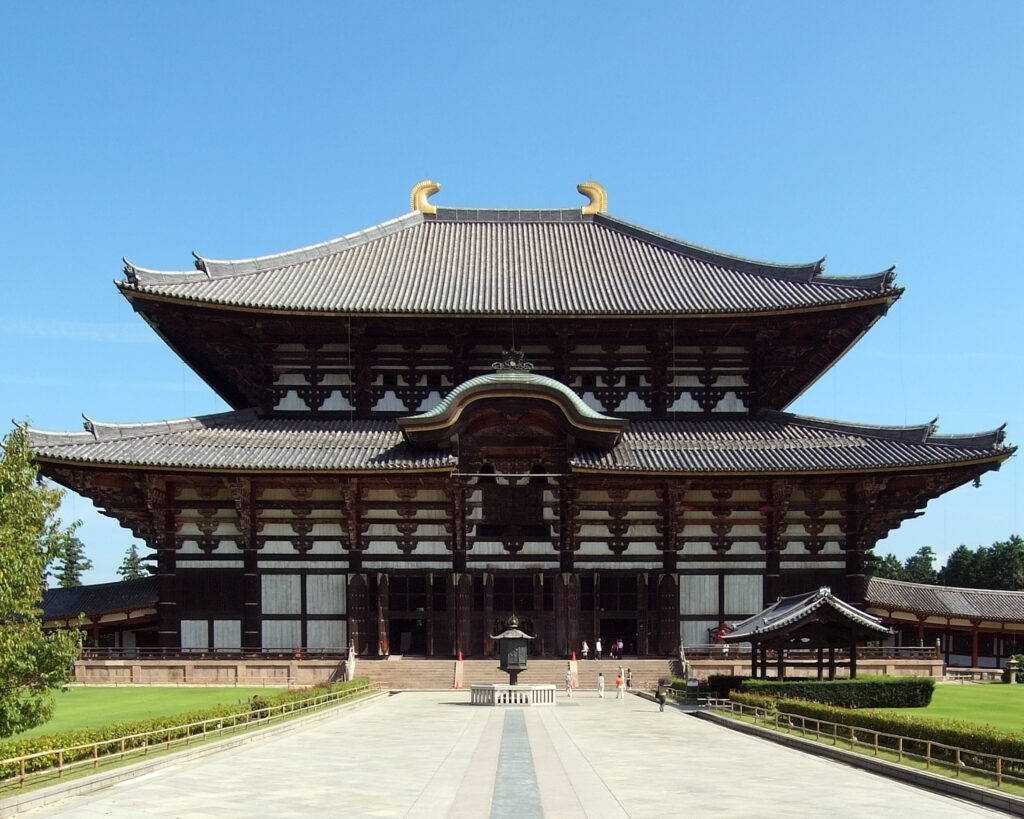
The Buddhist ritual of Kito (祈祷 prayer) has a long history in Japan and is believed to have been established during the late Asuka Era (592–710 AD).
The oldest nationally recorded Kito ritual appears in an official government document from the year 752, when Emperor Shōmu held a Kito ceremony for peace and a good harvest on the occasion of the completion of the Great Buddha (Daibutsu, 大仏) at Tōdaiji (東大寺) in Nara.

During the Heian Era (late 8th century to late 12th century), the Kito (祈祷) ritual became popular among the aristocratic class. People prayed not only for the prevention of disasters and famines but also for personal wishes, such as the recovery from illness.
In the Kamakura Era (late 12th century to 1333), the age of samurai governance, the first shogun of the Kamakura shogunate, Minamoto no Yoritomo, is said to have offered a prayer at Sensoji Temple (浅草寺) for victory over the Taira clan before the Battle of Dannoura, which led to his rise to power.
Later, Tokugawa Ieyasu, the first shogun of the Tokugawa shogunate, designated Sensoji as the official prayer temple for the Tokugawa family.
During the peaceful Edo Era (from 1603 for more than 200 years), not only nobles and samurai but also common people—such as farmers and merchants—were able to visit major shrines like Ise Jingu (in what was called Oise-mairi) and other well-known temples in large cities to pray for happiness and prosperity. This was made possible by the development of well-maintained roads connecting Edo with other major cities during this time of peace.
How to apply Kito at SENSOJI, Asakusa?
There are several steps before, within and after the KITO祈祷 as follows.
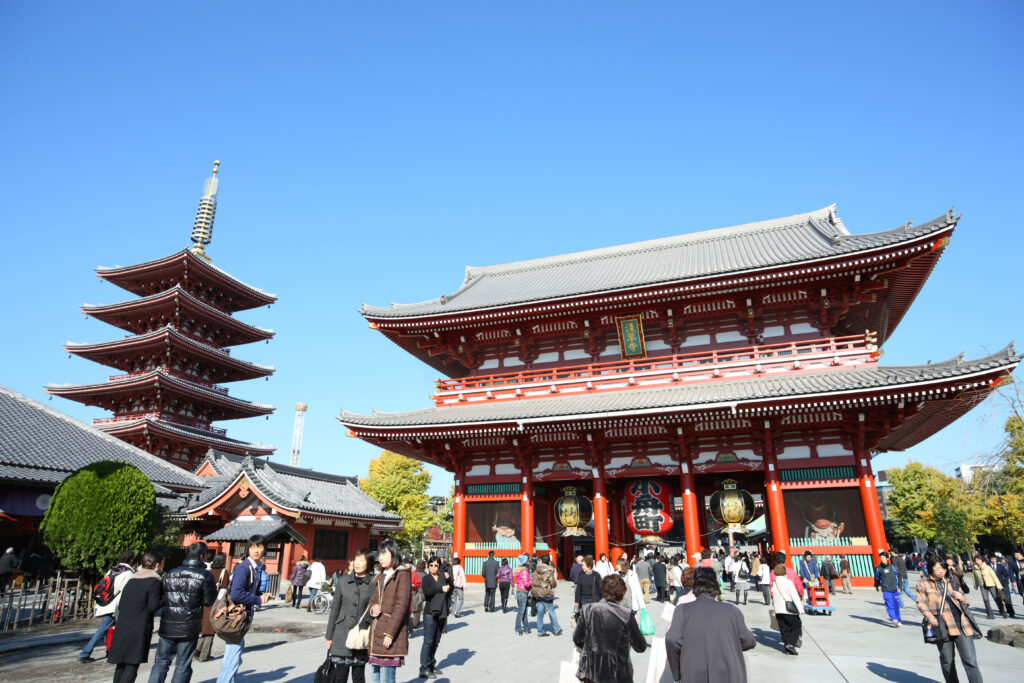
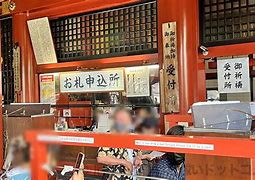
- Content of wish
- Contribution as a fee of the prayer service
- Fill in the application
- Ceremony of prayer
- Talisman 祈祷札
- Bring back your talisman to home
Content of wish
Sendsoji and most of temples provide the list of wish which applicant apply to pray for. All you need to do is chose one from the list. If you cannot find the one of your thought, you can consult temple’s staff.
| 家内安全 | Family safety | 商売繁盛 | Business prosperity |
| 身体健全 | For healthy body and soul | 心願成就 | For realization of wishes |
| 厄除 | To ward off unluck | 開運 | For bringing good luck |
| 災難除 | For avoiding problems | 交通安全 | For safe transportation |
| 当病平癒 | For recovering illness | 息災延命 | For longevity of life |
| 良縁 | For finding good partner | 入試合格 | For passing examination |
| 安産 | For easy delivery | 御礼 | Appreciation to Buddha |
Contribution as a fee of the prayer service
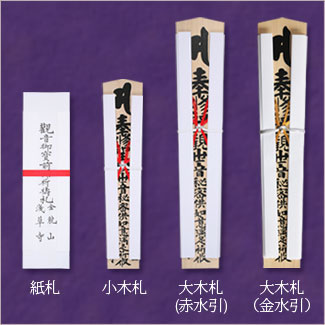
The fee for the prayer service is not fixed, but it generally starts from 5,000 yen. However, offering a smaller amount does not mean you will receive fewer blessings.
The size and shape of the Kito-fuda (祈祷札), or talisman, may vary depending on the amount of your offering. Your wish and name are written on the talisman in traditional Japanese calligraphy.
Fill in the application
Since the application form is available only in Japanese, you may need to ask the staff for help filling it out, or ask them to fill it in for you. However, the process is simple — all you need to do is write your name and choose your wish from a prepared list.
Ceremony of prayer
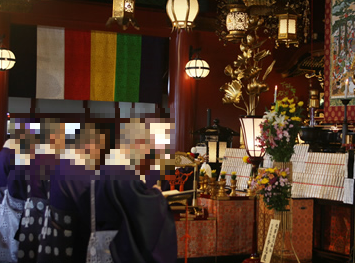
Sensoji conducts the Kito (祈祷) ritual twice a day—at 10:00 a.m. and 2:00 p.m.—so it is recommended that you complete your application at least 10 minutes before either time.
The ceremony is performed by the temple’s monks, who chant sutras to the temple’s principal image, Kannon (Avalokitesvara Bodhisattva, 観世音菩薩), following ceremonial practices that have been passed down for over a thousand years.
The ritual lasts about 20 to 30 minutes. It is highly recommended to attend, as it offers a valuable opportunity to witness an authentic Japanese Buddhist ritual.
Talisman 祈祷札
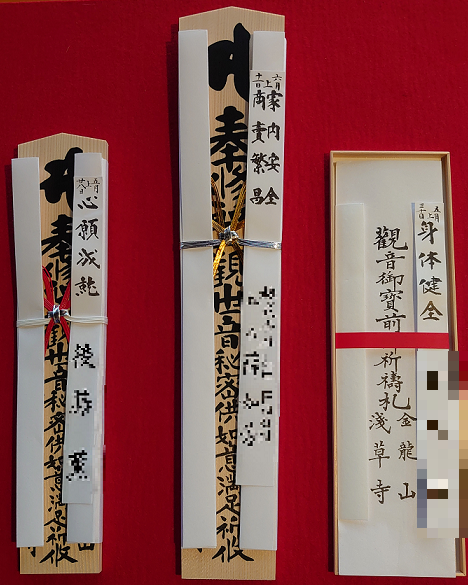
After the ritual, those who applied for the prayer service will receive a talisman designed according to the temple’s tradition. It is believed that the spirit of Kannon (Avalokitesvara Bodhisattva, 観世音菩薩) is embedded within the talisman.
Bring back your talisman to home
You bring the talisman back home and enshrine it in a respectful place. By doing so, you may feel a sense of comfort, as if you are being protected by Bodhisattva Kannon, with your wish gently supported toward fulfillment.
In fact, many Japanese people visit Sensoji Temple (浅草寺) to pray for their hopes to come true, and then enshrine the talisman at home, believing that they are always accompanied by a divided spirit of Kannon (観世音菩薩) residing within it.
Even for those who do not participate in the Kito (祈祷) ritual, many choose to obtain an amulet (omamori), which is relatively inexpensive and portable, yet still believed to carry the spiritual power of Buddha.
Summary
Kito祈祷 is one of the rituals of Buddhism praying to Biddha for people’s wishes and officiated by monks in the sanctuary area of the hall. It has been continued through the history from Nara era(8th century).The talisman( rogation plate) is given after the ceremony. You can bring it back to your home to enshrine. The talisman always bless you. The oldest temple in Tokyo, Sensoji, can provide the service for you.
For Tour Guide san
I would like the tour-guide san to explain followings to your customers when your costomers are interest in Kito祈祷.
- Kito is the Buddhist ritual praying to Buddha for peoples’s wish.
- It has long historu from Nara era, the first national Kito is to be said at the completion of Todaiji Big Budda in Nara city.
- After the Kito祈祷, the talisman(rogation plate) is given to the applicant and to be enshrined at their home.
Welcome your recommendation of the theme for next!
I may overlook some ordinary action which impress you or let you feel different, so if you want to know about any Japanese behavior or actions which make you interesting, please let me know. I try to analize and post the story in this site.


